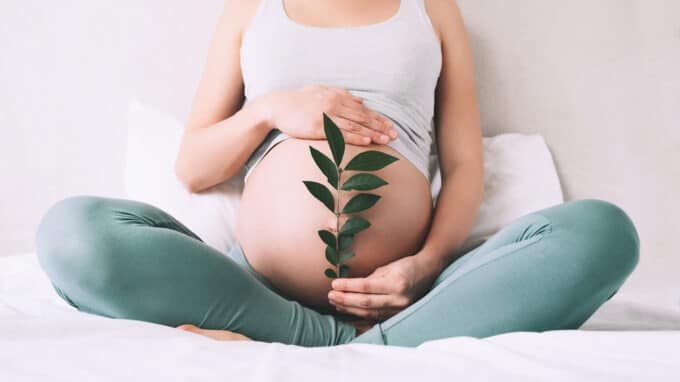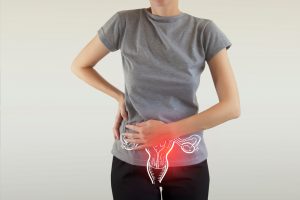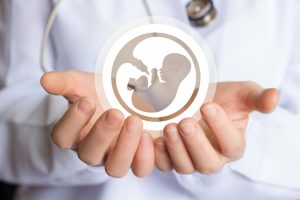The constant remodeling of the organs of the female reproductive tract during the reproductive cycle leads to fibrosis and chronic inflammation over the years. Scientists from the German Cancer Research Center (DKFZ) have now uncovered these unexpected long-term consequences of female reproductive function in mice. The results have been published in the scientific journal CELL.
The organs of the female reproductive tract are extensively remodeled during each menstrual cycle in preparation for ovulation or pregnancy. This process is similar in other female mammals, where it is called the estrus cycle. The recurrent remodeling and its effects on the affected organs – ovary, fallopian tubes, uterus, cervix and vagina – have been little researched to date. Many previous studies have been based purely on microscopic examinations or have only focused on individual organs or the activity of certain genes. A team led by Ângela Gonçalves and Duncan Odom, both DKFZ, has now systematically investigated the changes in gene activity and morphology in each phase of the oestrus cycle in all affected organs of the mouse – at the level of individual cells and with spatial resolution. This enabled the researchers to create a cell atlas of the female reproductive tract.
Constant Remodeling of the Reproductive Tract can Lead to Diseases
The results show that connective tissue cells, fibroblasts, play a central and very organ-specific role in the remodeling of the reproductive tract by controlling the reorganization of the extracellular matrix and inflammation. Many physiological reproductive events such as ovulation, menstruation or implantation of the fertilized egg show characteristic signs of inflammation. The molecular signaling pathways and molecules responsible for maintaining this inflammation are largely derived from fibroblasts, one of the main sources of pro-inflammatory messengers. A remarkable feature of the female reproductive tract is its ability to rapidly clear this cyclic inflammation and restore normal reproductive function.
Inflammation that does not subside can become chronic in conjunction with other signs of ageing and lead to fibrosis. Based on their findings, the DKFZ researchers developed a model in which the repeated remodeling of the reproductive tract over the course of a lifetime leads to the gradual, age-related development of fibrosis and chronic inflammation. They were able to test this hypothesis directly by switching off the estrus cycle with medication. This cycle blockade reduced the progression of fibrosis, while other ageing processes continued to occur normally.
In humans, a higher number of menstrual cycles in a lifetime is associated with a higher risk of uterine cancer. If chronic inflammation and fibrosis also increase with the number of cycles in women, this could be a contributing factor to an increased risk of cancer. This atlas sheds light on how estrus, pregnancy and aging combine to shape the female reproductive tract. For a long time, it was assumed that these events leave no marks or scars on the affected organs. The researchers’ work reveals the unexpected consequences for female reproductive function caused by the constant remodeling of the reproductive tract.
How Certain Genes Influence the Female Fertility Window
The age at which women enter menopause is critical to fertility and affects healthy aging in women, but reproductive aging has long been difficult for scientists to study, and knowledge of the underlying biology is limited. Scientists have identified nearly 300 gene variations that affect the reproductive lifespan of women. In addition, they have successfully manipulated several key genes associated with these variants in mice to extend their reproductive lifespan. Their findings, published in the journal Nature, significantly expand knowledge of the reproductive aging process and offer ways to better predict which women might enter menopause earlier than others.
While life expectancy has increased dramatically over the last 150 years, the age at which most women reach natural menopause has remained relatively constant at around 50. Women are born with all the eggs they will ever have, and these are gradually lost with age. The menopause occurs when most of the eggs have disappeared, but natural fertility declines much earlier. It is clear that the repair of damaged DNA in eggs is very important in determining the pool of eggs that women are born with and also how quickly they are lost throughout life. A better understanding of the biological processes involved in reproductive ageing could lead to improved fertility treatment options.
This research is the result of a global collaboration of scientists from more than 180 institutions under the joint leadership of the University of Exeter, the MRC Epidemiology Unit at the University of Cambridge, the Institute of Biotechnology and Biomedicine at the Universitat Autònoma de Barcelona and the DNRF Center for Chromosome Stability at the University of Copenhagen. Their findings reveal new genetic variations associated with reproductive lifespan, increasing the number of known variations from 56 to 290.
A Reproductive Lifespan that is Approximately 25 Percent Longer
The discoveries were made possible by analyzing data sets from hundreds of thousands of women from numerous studies, including the UK Biobank and 23andMe. While the vast majority of the data comes from women of European descent, data from nearly 80,000 women of East Asian descent was also examined, yielding broadly similar results. The team discovered that many of the genes involved are linked to processes of DNA repair. They also found that many of these genes are active before birth, when the human eggs are created, but also throughout life. Notable examples include genes from two cell cycle checkpoint pathways – CHEK1 and CHEK2 – that regulate a variety of DNA repair processes. Silencing a particular gene (CHEK2) so that it no longer functions and overexpressing another gene (CHEK1) to increase its activity each led to an approximately 25 percent longer reproductive lifespan in mice. The reproductive physiology of mice differs from that of humans in important ways, including the fact that mice do not have a menopause. However, the study also looked at women who naturally lack an active CHEK2 gene and found that they enter menopause on average 3.5 years later than women with a normally active gene.
The researchers saw that two of the genes that produce proteins involved in repairing damaged DNA work in opposite directions in relation to reproduction in mice. Female mice with more CHEK1 protein are born with more eggs, and it takes longer for them to empty naturally, so the reproductive period is extended. The second gene, CHEK2, has a similar effect, allowing eggs to survive longer, but in this case the gene was switched off so that no protein is produced, suggesting that activation of CHEK2 could cause egg death in adult mice. The genes identified in this work influence the age at natural menopause and may also be used to predict which women are at highest risk of entering menopause at a young age.
The team also investigated the health effects of earlier or later menopause using an approach that tests the effects of naturally occurring genetic differences. They found that a genetically determined earlier menopause increases the risk of type 2 diabetes and is associated with poorer bone health and an increased risk of fractures. However, it does reduce the risk of some cancers, such as ovarian and breast cancer, which are known to be sensitive to sex hormones that are present in higher levels during menstruation. Although much remains to be done, by combining genetic analysis in humans and studies in mice, and by studying the timing of when these genes are activated in human oocytes, researchers now know much more about the ageing of human reproductive capacity. This also sheds light on how some health problems associated with the timing of menopause can be avoided.






